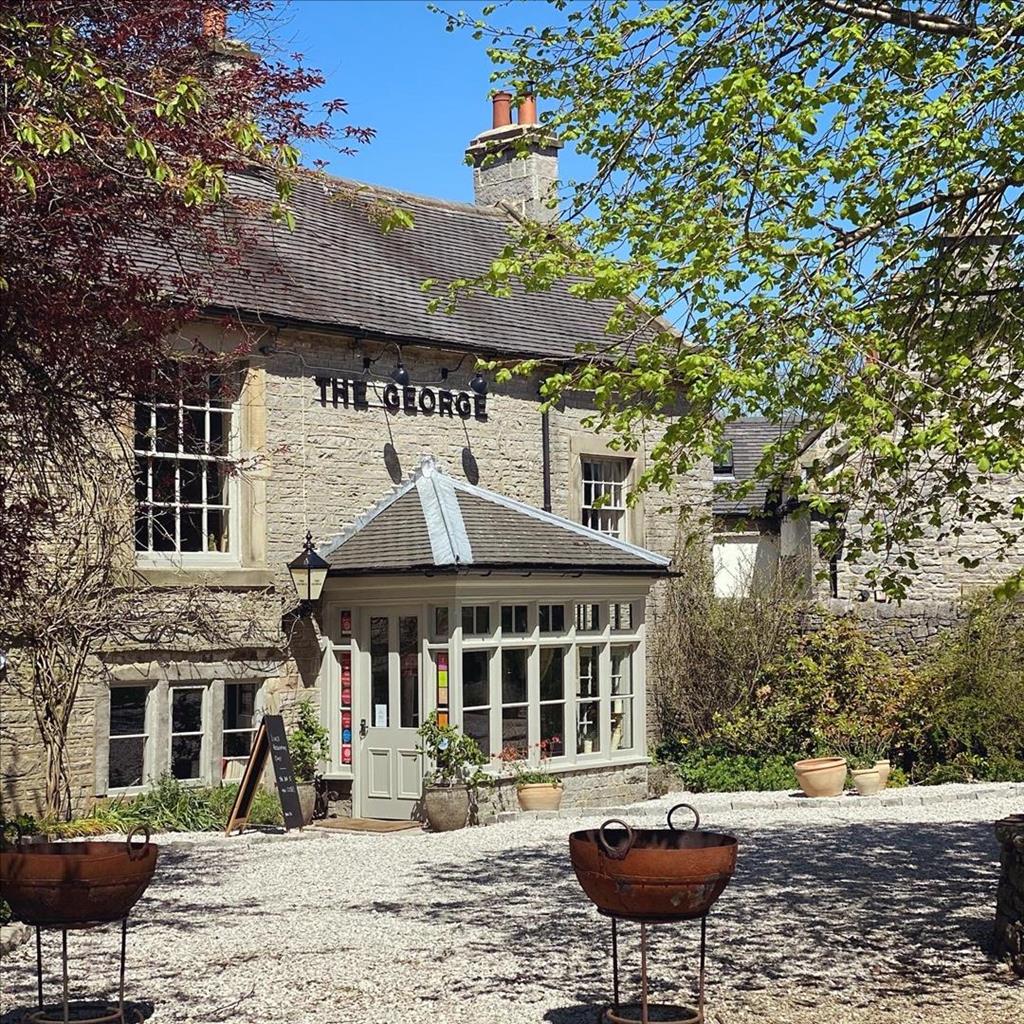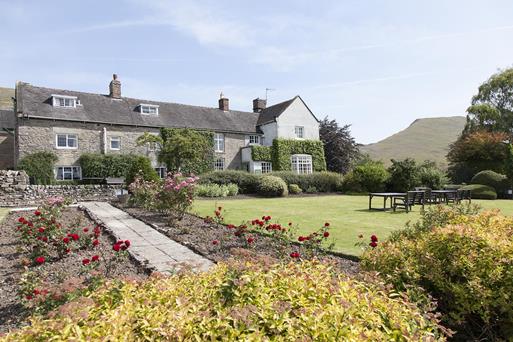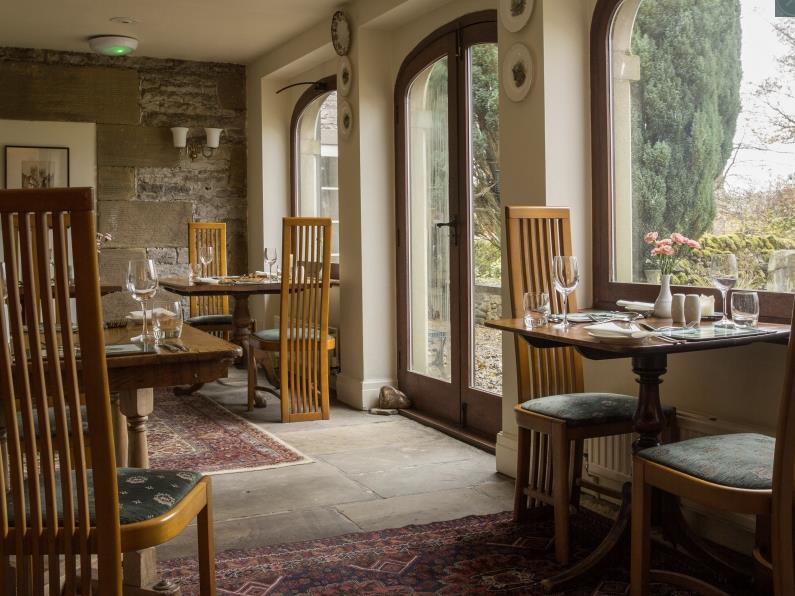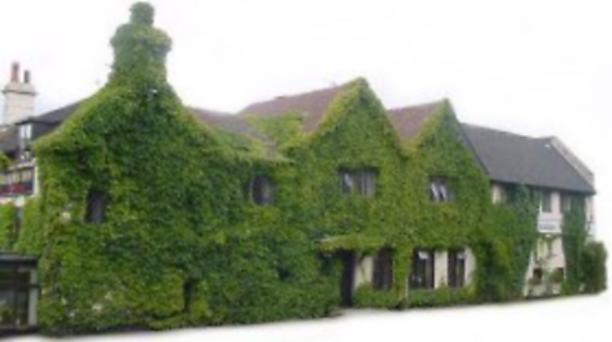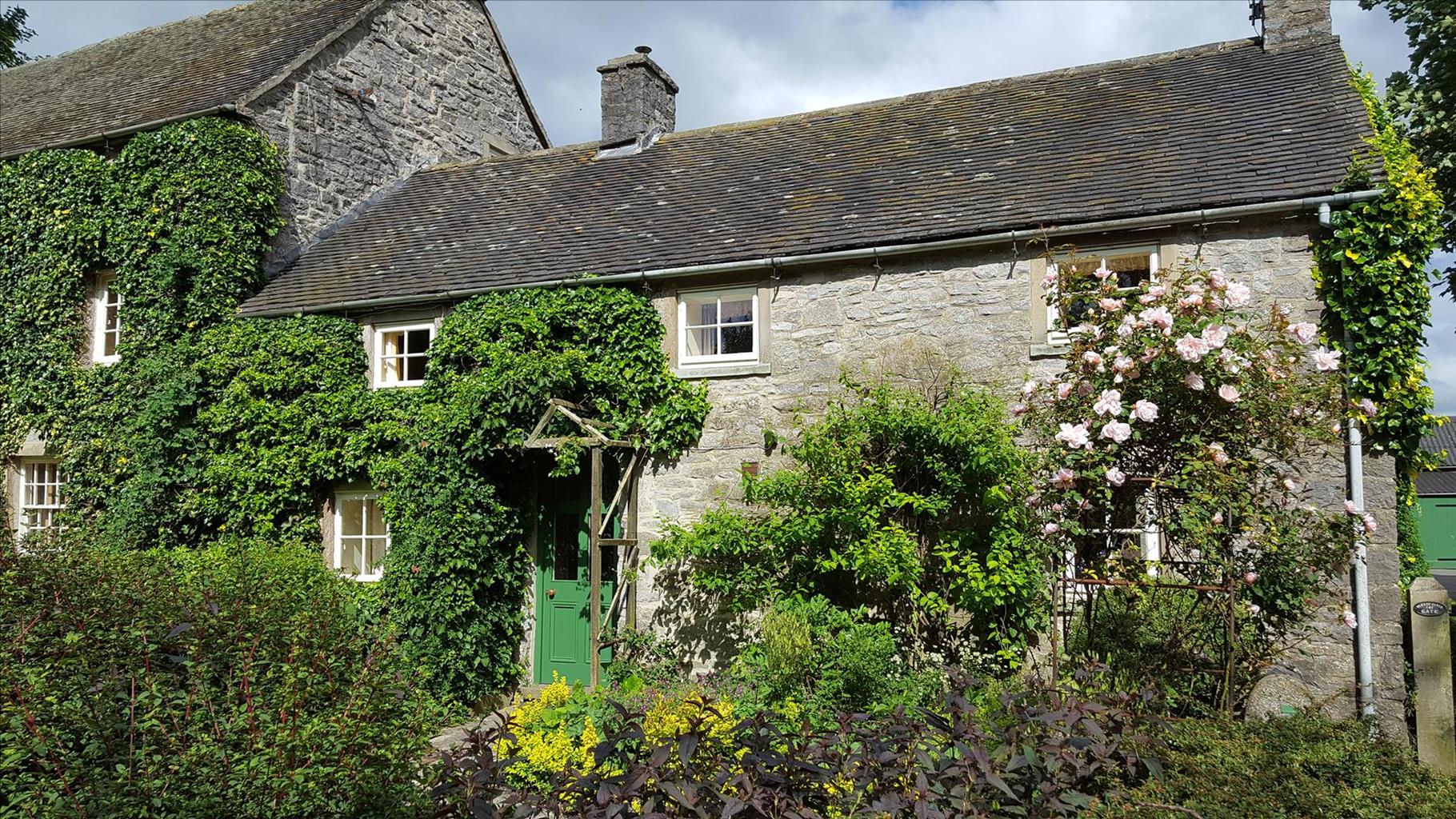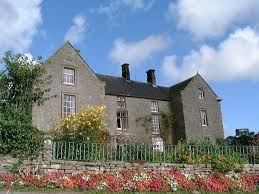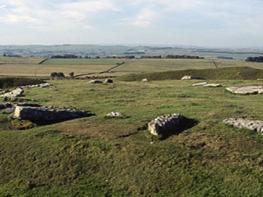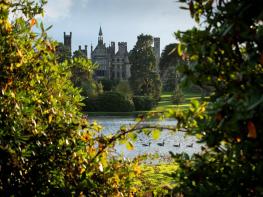The farm stands a few hundred yards from the main Leek to Ashbourne road, and the land…
Beeston Tor

Bertram’s stony retreat at Beeston
9 miles (14.5kms)
About the walk
Of all the soaring limestone crags of the Manifold valley, Beeston Tor is one of the most impressive as well as probably the most secluded. It’s an example of what’s known as reef limestone, formed around 350 million years ago when much of the present-day Peak District was a tropical lagoon. Although glimpsed at the start, the full majesty of Beeston Tor is held back for the final stage of the walk, when the huge crag heaves into view from the ridge above Throwley Hall.
St Bertram’s religious calling
At the foot of Beeston Tor is St Bertram’s Cave, a small fissure through which the surface water can disappear underground leaving whole sections of the riverbed dry in the summer months. The cave is named after the one-time King of Mercia, whose 8th-century kingdom included what we know today as Staffordshire. Bertram was supposedly born and raised in a cave in the valley, but he renounced his kingship after his wife and child were killed by wolves when he was out hunting. He opted instead for a religious life, building a hermitage near Stafford and becoming a recluse. He’s remembered at sites across the county, with a particularly striking modern statue of the saint at Longnor church, but it is said that he spent his last years as a hermit in a Staffordshire cave near Ilam. It’s possible that the cave was at the foot of Beeston Tor. St Bertam is buried within Ilam Holy Cross Church where his tomb still regularly attracts pilgrims.
Severe climbing routes
When St Bertam’s Cave was properly excavated in the 1920s and ‘30s there was evidence of prehistoric occupation, plus a hoard of Saxon coins was found. In Edwardian times Beeston Tor was particularly popular with visitors, with the Manifold Valley Light Railway even establishing a special halt just for sightseers. Today the towering cliffs are a magnet for climbers and there are some testing routes up the fissures and rock chimneys which bear such names as The Beast, The Spider and Beeston Eliminate. A far more sedate attraction lies further down the Manifold Valley, on the walking route and definitely worth a few minutes’ inspection. Throwley Old Hall was built on the site of a medieval village, complete with a deer park and ridge and furrow cultivation strips, and although only the ruins of this once imposing Elizabethan building remain it’s still possible to appreciate its scale and charm. Interpretation boards tell the building’s story in more detail, including some period sketches showing it in a better state of repair.
Walk directions
From the car park cross the road for the right of two parallel tracks. After 650yds (594m) turn right into Weag’s Barn nature reserve for a waymarked bridleway up the slope. At the top keep left and with the wall on your right continue until you meet the corner of a lane. Go up the lane for 50yds (46m) then left on to another bridleway.
Drop down and cross a shallow valley, veering right to pass to the right of a large barn. Continue to the far top corner of the field, then go left beside a wall. Where this finally ends go half left to a gate and down to the valley bottom. Now swing left on a waymarked route around Saucefields Farm and along its drive into Waterfall.
Turn left to cross the ford and follow the lane up past the church. Turn left at the end, then immediately left and right on to Whitefields Lane. Where it bends sharply left to Pitchings Farm go straight on down a rough walled path that emerges on the Manifold Way near Waterhouses.
Turn left and follow the trail for 3/4 mile (1.2km), then go right for a signposted path that slants right, up the hillside. Beyond a gate it zig zags to the top, then swings right towards Calton. Go through a small field on the left to turn right on to a farm track to reach the edge of the village.
At a road go left, then left again. Turn right for a walled track which narrows to a path. At Cart Low keep left of the main buildings, then turn right at the signpost to Throwley around the back. Beyond a squeeze stile keep the tumbledown barn on you right and head out across open fields with an old wall on your right.
Ignore the signposted left turn and continue straight on downhill. Go through a gate in a crosswall and head half left across a wide field, aiming for Castern Hall on the far hillside. Turn left in the next field and head directly for Throwley Hall, keeping to the slope above the road.
Follow the lane through the farm and beyond the gateway between barns turn right and immediately left for a footpath through trees. Head up across a field for a gate at the top beside the farm track. Now walk down the far slope, aiming for Beeston Tor, and join a wide track at a gate that leads down into the valley and back to the car park.
Additional information
Grassy field paths, farm tracks and surfaced lanes, 10 stiles
Wooded valley bottom and slopes, open hilltop fields
On lead in fields around livestock, but plenty of enclosed tracks and quiet lanes
OS Explorer OL24 White Peak
On Manifold Trail by Weag’s Bridge
Nearest at Waterhouses, just off the route
WALKING IN SAFETY
Read our tips to look after yourself and the environment when following this walk.
Find out more
Also in the area
About the area
Discover Staffordshire
It was Staffordshire that bore the brunt of the largest non-nuclear explosion of World War II, when a munitions dump at RAF Fauld went up in 1944. It was also the county’s regiment that once boasted within its ranks the most decorated NCO of World War I, in the person of William Coltman (1891-1974). Going back a little further, George Handel penned his world-famous masterpiece The Messiah on Staffordshire soil. During another chapter of Staffordshire history, the county was home to the first canals and the first factory in Britain, and it had front-row seats for the drama surrounding one of the most notorious murder trials of the 19th century, that of Doctor William Palmer.
In outline, Staffordshire looks not unlike the profile of a man giving Leicestershire a big kiss. The man’s forehead is arguably the best region for hillwalking, as it comprises a significant chunk of the Peak District. This area is characterised by lofty moors, deep dales and tremendous views of both. Further south are the six sprawling towns that make up Stoke-on-Trent, which historically have had such an impact on Staffordshire’s fortunes, not to mention its culture and countryside. This is pottery country, formerly at the forefront of the Industrial Revolution and the driving force behind a network of canals that still criss-cross the county.
Nearby stays
Restaurants and Pubs
Nearby experiences
Recommended things to do
Why choose Rated Trips?
Your trusted guide to rated places across the UK
The best coverage
Discover more than 15,000 professionally rated places to stay, eat and visit from across the UK and Ireland.
Quality assured
Choose a place to stay safe in the knowledge that it has been expertly assessed by trained assessors.
Plan your next trip
Search by location or the type of place you're visiting to find your next ideal holiday experience.
Travel inspiration
Read our articles, city guides and recommended things to do for inspiration. We're here to help you explore the UK.

